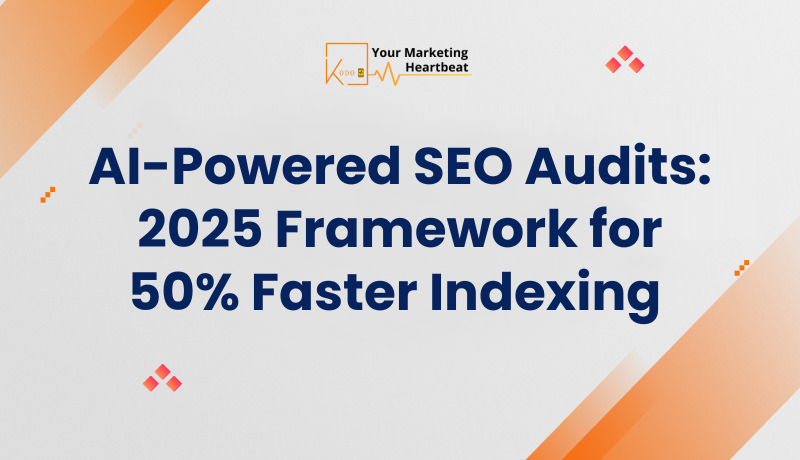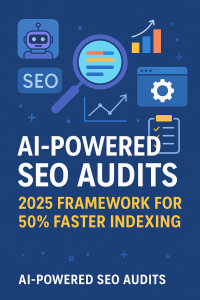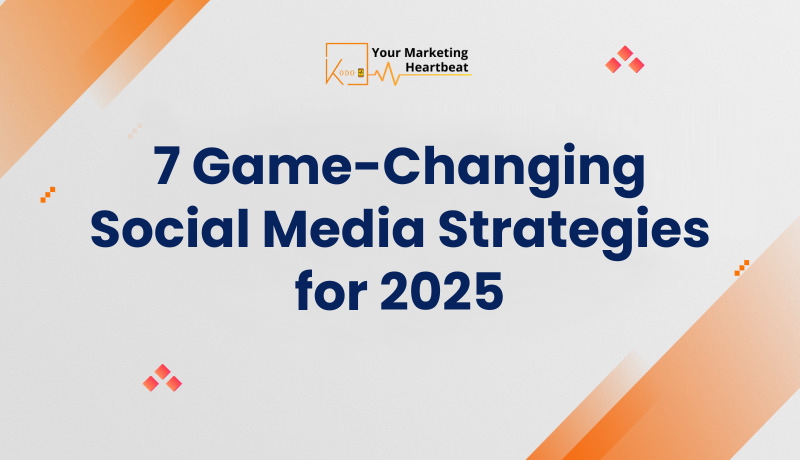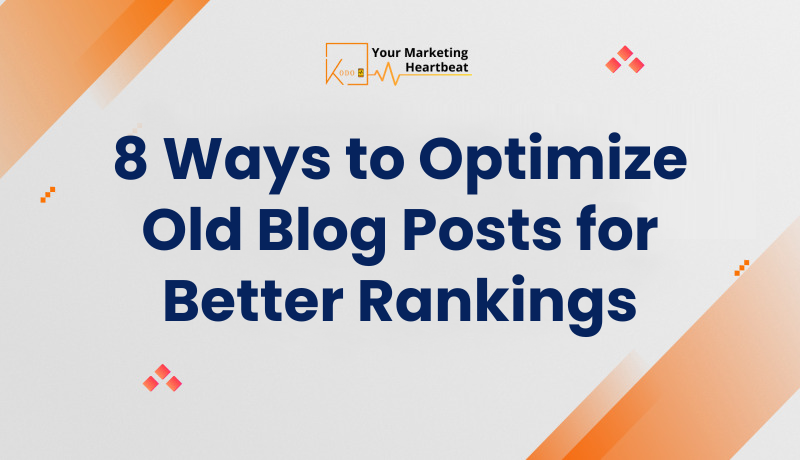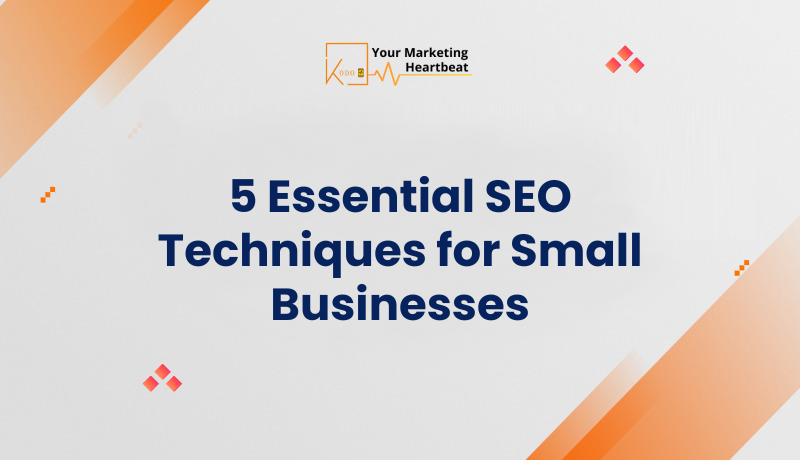
2025 SEO Guide: 7 On-Page Optimization Techniques for Top Rankings
In the ever-evolving digital landscape, staying ahead of the curve is crucial for businesses aiming to maintain a strong online presence. As we approach 2025, the importance of effective on-page SEO techniques cannot be overstated. These strategies are the cornerstone of improving your website’s visibility and ranking on search engine results pages (SERPs).

We’ve compiled a comprehensive guide to seven cutting-edge on-page SEO techniques that will help you boost your rankings and drive organic traffic to your site. By implementing these strategies, you’ll be well-positioned to outperform your competitors and capture the attention of your target audience.
Let’s dive into these powerful on-page SEO techniques that will shape the digital marketing landscape in 2025 and beyond.
1. Content Optimization: The Foundation of SEO Success
In the realm of digital marketing, content remains king. As we look towards 2025, the importance of high-quality, relevant content in SEO strategies is only set to increase. Search engines are becoming increasingly sophisticated in their ability to understand and interpret content, making it crucial for businesses to focus on creating valuable, informative, and engaging material for their audience.
The Power of Long-Form Content
Long-form content is gaining traction as a powerful SEO tool. Articles exceeding 2000 words tend to rank higher in search results, as they provide more comprehensive information on a topic. However, it’s not just about length – the content must be well-researched, authoritative, and offer genuine value to readers.
To create effective long-form content:
- Conduct thorough research on your topic
- Use data and statistics to support your points
- Include relevant examples and case studies
- Break up text with subheadings, bullet points, and images
- Ensure the content flows logically and is easy to read
Optimizing for Featured Snippets
Featured snippets, also known as “position zero” results, appear at the top of search results and can significantly increase your visibility. To optimize for featured snippets:
- Answer specific questions concisely
- Use bullet points or numbered lists for step-by-step information
- Include relevant keywords in your answers
- Structure your content with clear headings and subheadings
By focusing on these content optimization techniques, you’ll be well-positioned to improve your search rankings and provide valuable information to your audience.
2. Mobile-First Indexing: Prioritizing the Mobile Experience
As we approach 2025, the importance of mobile optimization in SEO cannot be overstated. With Google’s mobile-first indexing now in full effect, ensuring your website provides an excellent mobile experience is crucial for maintaining and improving your search rankings.
Responsive Design: The Foundation of Mobile Optimization
A responsive design ensures your website adapts seamlessly to different screen sizes and devices. Key elements of responsive design include:
- Flexible layouts that adjust to screen size
- Scalable images that resize appropriately
- Readable text without the need for zooming
- Easy-to-use navigation on smaller screens
Accelerated Mobile Pages (AMP)
AMP is an open-source initiative designed to make mobile pages load faster. Implementing AMP can lead to:
- Improved page load speeds
- Higher mobile search rankings
- Better user experience on mobile devices
By prioritizing mobile optimization, you’ll not only improve your search rankings but also provide a better user experience for the growing number of mobile users.
3. Voice Search Optimization: Preparing for the Future of Search
As we look towards 2025, voice search is set to play an increasingly significant role in how users interact with search engines. With the rise of smart speakers and virtual assistants, optimizing your content for voice search is becoming crucial for maintaining visibility in search results.
Understanding Voice Search Queries
Voice searches tend to be more conversational and longer than typed queries. To optimize for voice search:
- Focus on natural language and long-tail keywords
- Use question words (who, what, where, when, why, how) in your content
- Create content that directly answers common questions in your industry
Implementing FAQ Sections
FAQ sections are particularly effective for voice search optimization. They allow you to:
- Address common user queries directly
- Use natural language that matches voice search patterns
- Provide concise, informative answers that are ideal for featured snippets
Optimizing for Local Voice Searches
Many voice searches have local intent. To capitalize on this:
- Ensure your Google My Business listing is up-to-date and complete
- Include location-specific keywords in your content
- Create content that answers local queries (e.g., “Where’s the best pizza near me?”)
Improving Page Speed for Voice Search
Voice search results often prioritize fast-loading pages. To optimize for this:
- Implement AMP (Accelerated Mobile Pages)
- Minimize server response time
- Optimize images and other media for quick loading
By focusing on these voice search optimization techniques, you’ll be well-prepared for the increasing prevalence of voice-based queries in the coming years.
4. User Experience (UX) Optimization: The Key to SEO Success
As search engines become more sophisticated, user experience (UX) is playing an increasingly crucial role in SEO rankings. Google’s Core Web Vitals update has further emphasized the importance of providing a smooth, enjoyable experience for website visitors. As we approach 2025, optimizing for UX will be more critical than ever.
Core Web Vitals: The New SEO Benchmark
Google’s Core Web Vitals focus on three key aspects of user experience:
- Largest Contentful Paint (LCP): Measures loading performance
- First Input Delay (FID): Measures interactivity
- Cumulative Layout Shift (CLS): Measures visual stability
To optimize for Core Web Vitals:
- Improve server response times
- Optimize images and videos
- Minimize unnecessary JavaScript execution
- Use preload for critical assets
- Ensure stable layouts during page load
Intuitive Navigation and Site Structure
A well-organized website helps users find what they’re looking for quickly and easily. Consider:
- Implementing a clear, logical menu structure
- Using breadcrumbs for easy navigation
- Creating a site map to help users and search engines understand your site structure
- Ensuring important pages are no more than three clicks from the homepage
Engaging and Interactive Content
Interactive content keeps users on your site longer and can improve engagement metrics. Consider implementing:
- Calculators or tools relevant to your industry
- Video content with clickable elements
Accessibility Optimization
Making your website accessible to all users is not only ethical but can also improve your SEO. Key accessibility considerations include:
- Using proper heading structure (H1, H2, H3, etc.)
- Providing alt text for images
- Ensuring sufficient color contrast
- Making your site keyboard-navigable
By focusing on these UX optimization techniques, you’ll not only improve your search rankings but also provide a better experience for your website visitors, leading to increased engagement and conversions.
5. 5echnical SEO: Building a Strong Foundation
As we move towards 2025, technical SEO remains a crucial component of any successful SEO strategy. While content and user experience are important, a solid technical foundation ensures that search engines can effectively crawl, index, and understand your website.
Site Speed Optimization
Site speed is a critical ranking factor and directly impacts user experience. To optimize your site speed:
- Optimize images and videos
- Use a content delivery network (CDN)
- Implement lazy loading for images and videos
HTTPS Implementation
Secure websites are prioritized by search engines. If you haven’t already:
- Obtain an SSL certificate
- Implement HTTPS across your entire site
- Set up proper redirects from HTTP to HTTPS
XML Sitemap Optimization
An optimized XML sitemap helps search engines understand your site structure. Ensure your sitemap:
- Includes all important pages
- Follows the correct format
- Is submitted to search engines via Google Search Console and Bing Webmaster Tools
Robots.txt Optimization
A well-configured robots.txt file guides search engine crawlers. Best practices include:
- Blocking access to non-essential pages
- Allowing access to important content
- Specifying the location of your sitemap
Structured Data Implementation
Structured data helps search engines understand your content better. Consider implementing:
- Schema markup for various content types (articles, products, events, etc.)
- JSON-LD format for easier implementation and maintenance
- Testing your structured data using Google’s Rich Results Test
Mobile Optimization
With mobile-first indexing, ensuring your site is mobile-friendly is crucial:
- Optimize for mobile page speed
- Ensure content is easily readable on mobile devices
- Make sure interactive elements are easily tappable on touchscreens
By focusing on these technical SEO aspects, you’ll create a solid foundation for your website, making it easier for search engines to crawl, index, and rank your content effectively.
6. E-A-T Optimization: Building Trust and Authority
As we approach 2025, Google’s emphasis on E-A-T (Expertise, Authoritativeness, and Trustworthiness) continues to grow. This is particularly important for YMYL (Your Money or Your Life) sites that deal with topics that can significantly impact a person’s life, such as health, finance, or legal advice.
Showcasing Expertise
Demonstrating expertise in your field is crucial for E-A-T optimization:
- Create in-depth, well-researched content
- Include author bios highlighting relevant qualifications and experience
- Cite reputable sources and link to authoritative websites
- Regularly update content to ensure it remains accurate and current
Building Authoritativeness
Establishing your site as an authority in your niche involves:
- Earning high-quality backlinks from reputable sites in your industry
- Securing mentions and coverage in respected publications
- Participating in industry events and conferences
- Contributing guest posts to authoritative websites in your field
Enhancing Trustworthiness
Building trust with your audience and search engines is essential:
- Display clear contact information and customer service details
- Implement secure payment systems for e-commerce sites
- Showcase customer reviews and testimonials
- Maintain transparency about your business practices and policies
- Respond promptly and professionally to customer feedback and complaints
Optimizing for YMYL Topics
If your site covers YMYL topics, additional considerations include:
- Ensuring content is written or reviewed by qualified experts
- Providing clear sources for all factual claims
- Regularly updating content to reflect the latest information
- Including disclaimers where appropriate
Leveraging User-Generated Content
User-generated content can enhance E-A-T when properly managed:
- Encourage customer reviews and ratings
- Moderate user comments to ensure quality and relevance
- Highlight user success stories or case studies
- Implement a Q&A section where experts can answer user queries
By focusing on these E-A-T optimization strategies, you’ll not only improve your search rankings but also build trust with your audience, leading to increased engagement and conversions.
7. Local SEO: Dominating Your Geographic Market
As we look towards 2025, local SEO continues to be a crucial strategy for businesses targeting specific geographic areas. With the increasing prevalence of “near me” searches and Google’s emphasis on providing locally relevant results, optimizing for local search can significantly boost your visibility to nearby customers.
Google My Business Optimization
Your Google My Business (GMB) profile is the cornerstone of local SEO:
- Claim and verify your GMB listing
- Provide accurate and complete business information
- Choose the most relevant categories for your business
- Add high-quality photos and videos
- Encourage and respond to customer reviews
- Use Google Posts to share updates and offers
Local Keyword Optimization
Incorporating local keywords into your content is essential:
- Include city, state, and neighborhood names in your content
- Use local landmarks or well-known areas in your descriptions
- Optimize for “near me” searches by including phrases like “… in [city name]”
- Create location-specific pages for businesses with multiple locations
NAP Consistency
Ensuring your Name, Address, and Phone number (NAP) are consistent across the web is crucial:
- Use the exact same format for your NAP on your website and all online directories
- Regularly audit and update your NAP information on all platforms
- Use schema markup to provide clear NAP information to search engines
Local Link Building
Building local links can significantly boost your local SEO efforts:
- Partner with other local businesses for cross-promotion
- Sponsor local events or sports teams
- Join local business associations and chambers of commerce
- Seek opportunities for local press coverage
Local Schema Markup
Implementing local schema markup helps search engines understand your local business information:
- Use LocalBusiness schema to provide detailed business information
- Implement Review schema to showcase customer ratings
- Use Event schema for any local events you’re hosting or participating in
By focusing on these local SEO strategies, you’ll be well-positioned to capture the attention of nearby customers and dominate your local market in the digital landscape of 2025 and beyond.
Conclusion: Embracing the Future of SEO
As we look towards 2025, it’s clear that SEO will continue to evolve at a rapid pace. The techniques we’ve explored in this article – from content optimization and mobile-first indexing to voice search optimization and local SEO – represent the cutting edge of search engine optimization strategies.
To stay ahead in this dynamic landscape, it’s crucial to:
- Continuously adapt your SEO strategies to align with the latest search engine algorithms and user behaviors.
- Prioritize user experience in all aspects of your website design and content creation.
- Leverage emerging technologies like AI and machine learning to gain insights and automate SEO tasks.
- Focus on building expertise, authority, and trust in your niche.
- Stay informed about the latest SEO trends and best practices through ongoing education and industry research.
Remember, SEO is not just about ranking higher in search results – it’s about providing value to your audience and creating a seamless online experience. By implementing these advanced on-page SEO techniques, you’ll not only improve your search rankings but also build a stronger, more engaging online presence that resonates with your target audience.
As we move towards 2025 and beyond, the businesses that thrive will be those that embrace change, prioritize user needs, and consistently deliver high-quality, relevant content. By staying ahead of the curve and implementing these forward-thinking SEO strategies, you’ll be well-positioned to succeed in the ever-evolving digital landscape.
Frequently Asked Questions
What is on-page SEO?
On-page SEO refers to the practice of optimizing individual web pages to rank higher and earn more relevant traffic in search engines. It involves both the content and HTML source code of a page that can be optimized, as opposed to off-page SEO which refers to links and other external signals.
Why is mobile optimization important for SEO in 2025?
Mobile optimization is crucial because of Google’s mobile-first indexing, which means the search engine primarily uses the mobile version of content for indexing and ranking. With the increasing use of mobile devices for internet access, providing a seamless mobile experience is essential for both user satisfaction and search engine rankings.
How does voice search impact SEO strategies?
Voice search is changing the way people interact with search engines, leading to more conversational and question-based queries. This impacts SEO by emphasizing the importance of natural language optimization, featured snippets, and local SEO, as many voice searches have local intent.
What are Core Web Vitals and why are they important?
Core Web Vitals are a set of specific factors that Google considers important in a webpage’s overall user experience. They include Largest Contentful Paint (loading performance), First Input Delay (interactivity), and Cumulative Layout Shift (visual stability). These metrics are important because they directly impact user experience and are now used as ranking signals by Google.
How can businesses improve their E-A-T (Expertise, Authoritativeness, Trustworthiness)?
Businesses can improve their E-A-T by creating high-quality, expert-written content, securing backlinks from reputable sources, showcasing author credentials, maintaining a strong online reputation, and ensuring website security and transparency in business practices.
What is the role of structured data in SEO?
Structured data helps search engines understand the context of your content, which can lead to rich snippets in search results. This can improve click-through rates and provide users with more informative search results. Structured data is particularly important for local SEO, e-commerce sites, and content-rich websites.
How often should I update my SEO strategy?
SEO is an ongoing process, and strategies should be regularly reviewed and updated. It’s recommended to conduct a comprehensive SEO audit at least quarterly, with ongoing monitoring and adjustments as needed. Major algorithm updates or changes in your business focus may necessitate more immediate strategy updates.
